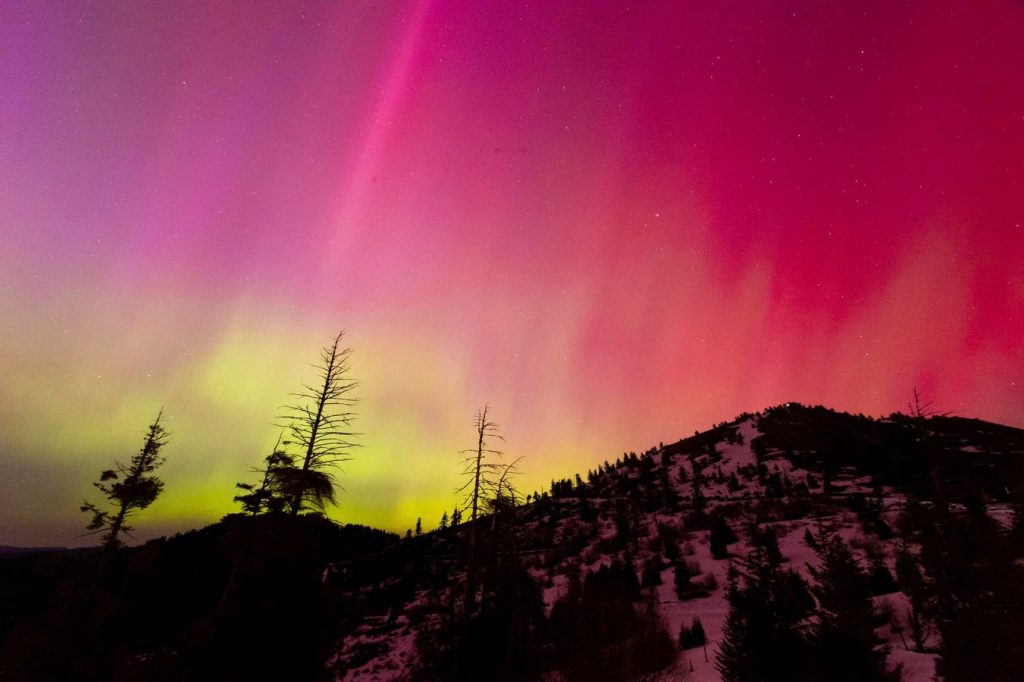The Northern Lights could be visible once again on Monday night in Alaska, Canada, and the northern U.S. as a geomagnetic storm is expected to calm down later in the week. The Northern Lights are the result of solar winds interacting with Earth’s magnetic field, and forecasters are predicting more major solar emissions on Monday, potentially making the Lights visible again. The Lights were visible in many parts of the U.S. over the weekend due to a historic geomagnetic storm. Alaska and Canada still have a high chance to see the Northern Lights as the storm begins to wind down, according to NOAA’s aurora forecast.
Monday night’s aurora is expected to have a Kp of at least 4, meaning the lights will move further from the poles and appear brighter to viewers. The storm is expected to wind down after Monday night as the Sun rotates, but the Northern Lights could still be visible for some people in Canada and Alaska on Tuesday. NOAA’s Space Weather Prediction Center extended the geomagnetic storm warning through at least 5 p.m. on Monday, with a K-index as high as 5 expected, meaning the Lights could still appear as far south as Michigan and Maine.
It is difficult for astronomers to predict exactly where the Northern Lights will be visible on any given night, but NOAA’s current estimation shows they could be viewable as far south as the northern continental U.S., including parts of Maine, Minnesota, and Washington. To view the Northern Lights, it is recommended to travel as close to the poles as possible, avoid city lights and light pollution, monitor weather forecasts for prime viewing conditions, and position yourself on a vantage point like a hilltop. The Lights are most active in the hours around midnight, typically from 10 p.m. to 2 a.m.
The current geomagnetic storm bombarding Earth is likely being caused by NOAA Region 3664, a magnetically complex sunspot about 15 times larger than Earth. The sunspot has been erupting solar flares towards Earth for days, with multiple X-class flares recorded in the past week. X-class flares are the largest and most powerful solar emissions, with one flare on Sunday measuring as powerful as X5.8. The current geomagnetic storm is expected to dissipate on Tuesday after Region 3664 rotates away from Earth.
The Northern Lights were visible again for millions of people on Sunday night, with a Kp 7 intensity. The agency issued two alerts for G3 level storms, or strong geomagnetic storms that may cause problems for satellites and high-frequency radio communication. These storms also produce visible auroras, and Sunday night’s Northern Lights were potentially visible as far south as Pennsylvania and Oregon, according to NOAA. Monday’s forecast indicates that the Northern Lights could still be visible in parts of Alaska, Canada, and the northern U.S. as the geomagnetic storm begins to wind down, offering viewers another opportunity to witness this natural phenomenon before it dissipates.













